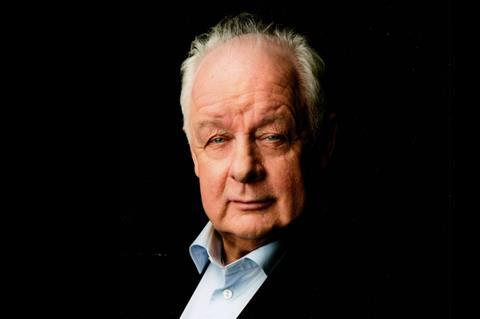
Irish director Jim Sheridan has sounded a warning on the state of the international film industry, saying “the whole film industry is in the emergency room.”
Speaking to Screen in Doha, Qatar where he is participating in the Qumra event as a master, Sheridan said, “It’s going to be more the way in the future that film has been taken back to being an art form that needs to be supported. It’s in the emergency room, the whole industry and it needs to be supported by the state or switch off the lights.”
Having provided updates for multiple projects on which he is currently working, Sheridan said, “The way it works now is you have to work on four or five things. You put a bit of money here, a bit of money there. I’ve never done that before and I’m finding it really difficult.
“The level of paperwork and bureaucracy that you have to go through to do co-productions and that type of production, that you ever get to making the picture is so mind-numbing.”
Sheridan is in the middle of production on Re-creation, a docu-fiction hybrid feature that is the director’s latest take on the unsolved 1996 murder of French TV producer Sophie Toscan du Plantier in west Ireland.
He has “about 70 to 80 minutes of a feature film” already in place, he said, and described Re-creation as “a version of [courtroom drama] 12 Angry Men.” The film will star Vicky Krieps as a member of a fictional jury sifting through the facts and lies around the murder.
Toscan du Plantier will not be a character in the film; but Ian Bailey, the neighbour who was arrested twice for the murder, will be a small role that has yet to be cast. Sheridan himself plays a jury foreman.
Also aiming to shoot this year is Hiba, a feature Sheridan will co-direct with Zahara Moufid. The story follows a young girl whose sister runs away with a boy of lower class, and the family must come to terms with the scandal. Screen Ireland is among the backers, with no cast yet attached.
A script is “nearly ready” for I Am A Man: The True Story Of Chief Standing Bear [formerly Murphy And The Indian] depicting the Ponca Tribe’s ‘Trail of Tears’ march that led to the 1879 trial of Standing Bear vs. the United States of America. Sheridan co-wrote the script with Bart Daly and Andrew Troy. Troy, who is part Chiricahua Apache, secured part of the financing from the Nebraska Legislature, although additional finance is proving difficult.
“There are so far no Native American leading men that could finance a movie,” said Sheridan. “But I think in this day and age there’s nobody apart from Tom Cruise who can finance a movie. We’re out to people.”
He still hopes to make North Star [formerly Sheriff Street], about his own childhood growing up in Dublin, from a script he has been working on for over two decades. His involvement is complete on another project currently in production: Sky series Lockerbie starring Colin Firth, about the 1988 plane bombing, with Sheridan co-writing the script but not directing as had been previously reported. “I might come back to Lockerbie in another guise in my own way,” said the filmmaker.
Sheridan made his name on three films with Daniel Day-Lewis: 1989’s My Left Foot, 1993’s In The Name Of The Father and 1997’s The Boxer. Although Day-Lewis has said he has retired from acting, Sheridan said he would love to work with him again.
“He says he’s done, I keep talking to him,” said Sheridan. “I’d love to do something with him again. He’s like everybody else, he opens up the streamers and there’s seven thousand choices, none of them are good. Film has been moved out of the public domain into a private domain – you have a remote, you can stop it. It’s not the same experience. It’d be great to see Daniel coming back and doing something ‘cos he’s so good.”
Masterclass
During his two-hour masterclass, Sheridan spoke on topics including spirituality, religion, politics, disability and language.
He was asked a long question by one of the emerging filmmakers attending Qumra, about, given that he has portrayed violence in the name of a nationalist cause through the IRA, how one might depict and include the terrorist group Hamas in a film.
“It’s a very difficult subject matter. How do I answer that?,” said Sheridan. “I think it would be very interesting; I think it would be very hard to get funding. In my instance I got it from Hollywood.”
“The horror show that is going on, I don’t know what to say to it,” said the director. “There’s definitely a movie that should come out of that; it’s not necessarily the one Steven [Spielberg] wants to make on the people who died on October 7, although that’s valid too.” The USC Shoah Foundation, founded by Spielberg, is collecting video testimonies of the atrocities committed by Hamas in Israel on October 7; Spielberg is not directly involved in the project although has given it his support.
“After Bloody Sunday I was very angry, even to the extent of joining the political wing of [Irish nationalists] Sinn Fein,” said Sheridan. “All I did was sell the paper. Within six months, I had a problem spiritually about the way these people were conducting… I felt angry at the leadership.”
“We don’t have the tools to win without resorting to violence,” observed the director. “It might be a self-defeating tool; but [people] are going to go there when they’ve been pushed so far, they don’t know what else to do.”
Sheridan related the situation to his potential Lockerbie project. “I wanted to call it al-Megrahi The Arab, and show how a lot of the time the Arab population are in an impossible position,” said Sheridan.
Pulpit
“I believe in many ways that the pulpit shifted from the church to the television,” said Sheridan, speaking of his homeland in Ireland. “Yesterday I watched everybody coming out of the mosque [in Doha], and got so nostalgic – it looked exactly like my church in Ireland when I was 12.
“Everybody has always been trying to make Irish Catholics [into] Protestants; and for 600 years, we resisted. And then the television came in, and within 30 years it was over.
“The power of images to change the spiritual basis of Ireland deeply affected me, and still does.”
Sheridan spoke at length about his 1989 feature My Left Foot, which told the true story of Christy Brown, an Irish man with cerebral palsy. The film was nominated for five Oscars in 1990, winning two – best supporting actress for Brenda Fricker, and best actor for Daniel Day-Lewis, increasing his stardom in the process.
“People asked Daniel why he stayed in character – we never really answered it,” said Sheridan. “It became not so much a facile ‘method acting’ nonsense, as a spiritual acceptance of the condition by Daniel.”
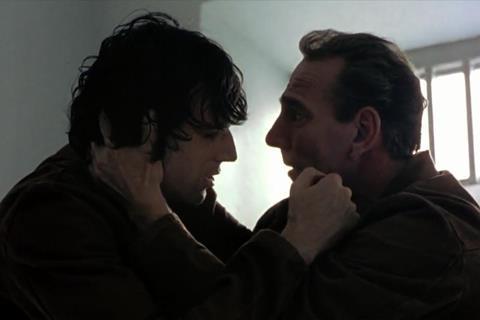
Sheridan then moved on to another collaboration with Day-Lewis, 1993’s In The Name Of The Father, which scored seven Oscar nods including best director and best actor for the pair.
“Daniel is a poet, he’s a spiritual person,” said Sheridan, recalling a scene when Gerry Conlan [the primary character of In The Name Of The Father, an Irish man wrongly convicted for an IRA bombing in 1974] is coerced into signing a confession. “I said to Daniel, when Gerry signs away his life and says he did the bombing, I don’t think I can get people back – people will say ‘where there’s smoke, there’s fire’.”
“Daniel said, ‘OK – could you keep me up for three nights in a row?’. By the time he got on to set you could feel this terrible emotion that plays beyond words. I’m always interested beyond words; if you’re in a culture where your first language is not your native language, it lives past words.”
Sheridan also repeatedly referred to all filmmaking as propaganda; including his own, in relation to the Troubles [the conflict in Ireland from the late 1960s to late 1990s].
“Rage, anger, reaction, education,” said Sheridan when asked what the Troubles meant to him. “My mother was a complete Republican, and my dad was an Anglophile. Bloody Sunday was a really traumatic event for us. Our house [in Dublin] had all the refugees from the north, so it was real to us; but it was also a trap. Sometimes the oppressed don’t know how to do the propaganda.
“I have no problem saying what I do is propaganda,” continued Sheridan. “Shakespeare was propaganda. Henry V was the most warrior-like speech you’ve ever heard. But it’s still art. In some deep way, all art is propaganda.” He later said Michael Curtiz’s 1942 war romance Casablanca is “probably the best propaganda movie ever made; and probably the best movie ever made.”
Having used his mother as a guide for the mother in My Left Foot, Sheridan said he wanted to portray a good father in In The Name….; and used his own father’s positive qualities as inspiration.
“On the opening night in Dublin, I remember getting up and saying ‘he’s here tonight, Peter Sheridan’, and he got a big clap and he came up [on stage],” said Sheridan. “He whispered in my ear ‘I love you’.
“That was the first time I ever heard him say that. And the last. He died two weeks later; I didn’t see him again.”
Sheridan’s recollections and thoughts were well-received by the attending filmmakers; when he occasionally warned of a rambling story ahead, many voices implored him to continue.
French filmmaker Leos Carax gives the next Qumra masterclass tomorrow (Monday, March 4), before Birdman sound designer Martin Hernandez and filmmaker Atom Egoyan close out the masterclass programme in the following two days.

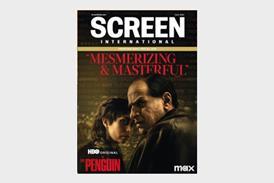
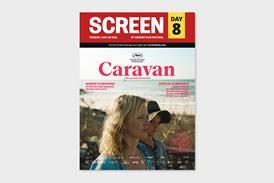


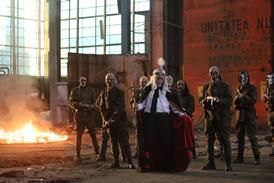
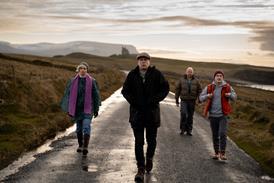





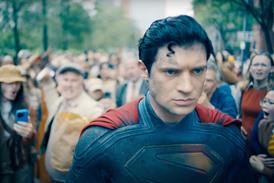
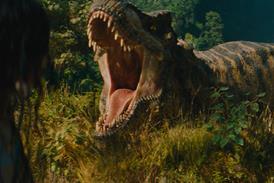

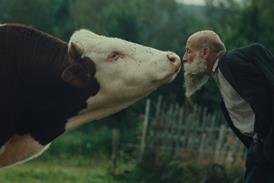









No comments yet